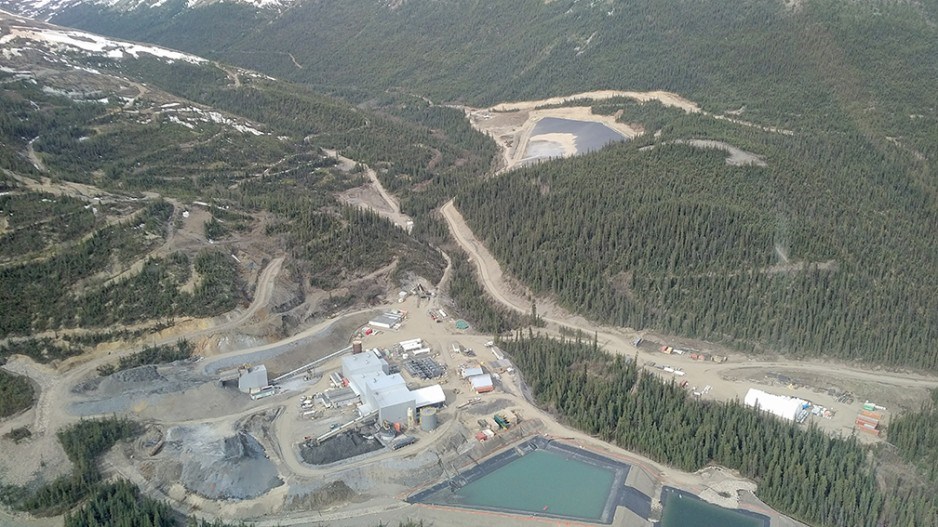A northern B.C. mine has attracted the attention and investment of the largest U.S.-based primary silver miner.
Coeur Mining Inc. (NYSE:CDE) recently announced it will be acquiring Vancouver-headquartered JDS Silver Inc. and, along with it, the company’s only operating asset – the high-grade silver, zinc and lead Silvertip mine – in a deal worth up to US$250 million.
“We believe Coeur has purchased a world-class asset in a great jurisdiction, and Silvertip will be an excellent addition to the company,” wrote Brent Gilchrist, president of JDS Silver, in a statement to Business in Vancouver.
The acquisition gets Coeur into the B.C. market, allowing the company to add a sixth producing mine to its roster of five, which are based in the U.S., Mexico and Bolivia.
At the same time, it takes the mine’s Houston-based private equity backer out of the Canadian market.
“We’d had a few parties who were, let’s call it knocking on the door, for lack of a better word,” said Denham Capital director Caroline Donally, who is responsible for analysis, structuring, valuation and execution of the firm’s mining deal investments.
Last year, Denham acquired the privately owned JDS Silver in a deal worth US$65 million. The investment helped complete the construction of Silvertip and brought the mine into production last fall.
“People had obviously heard rumours in the market that we were building and planning on taking it into production,” said Donally, adding that with a couple of parties showing interest in the asset, her firm let a handful “have a look and see what they thought.”
Coeur came up with the most attractive offer – an initial consideration of US$200 million, with an additional US$50 million contingent on specific permitting and exploration milestones being met. The deal is expected to close before the end of October.
“It is fairly unusual for a new mine to almost pop up on the radar, be in a private company and not be in a public company, which I think was a matter of interest to certain companies because it was an ability for them to acquire something which doesn’t actually have a history in the public market,” added Donally.
Silvertip, located 16 kilometres south of the B.C.-Yukon border, has a 60-year history of mineral exploration, dating back to the discovery of the Silvertip deposit in 1957. Coeur Mining expects that once an average mining rate of 1,000 tonnes per day is achieved, the site will have an annual average production of about 10 million silver equivalent ounces over the course of a 7.5-year initial mine life. Broken down, that’s three million ounces of silver, 45 million to 50 million pounds of zinc and 40 million to 45 million pounds of lead.
Coeur has also announced its intention to invest between US$25 million and US$35 million in surface infrastructure, accelerated underground development and drilling and mill optimization over a six-month period once the deal closes, before resuming commercial production by the end of 2018’s first quarter.
If Silvertip meets Coeur’s expectations, the average annual production of 10 million silver equivalent ounces will contribute significantly to the company’s production profile. An expected average year at Silvertip represents a 27.5% increase over the 36.3 million silver equivalent ounces Coeur produced last year.
“It’s obviously good news for the province of B.C.,” said Bryan Cox, president and CEO of the Mining Association of British Columbia (MABC). “We’ll see what they’re able to do with the project, but always, investment into the province is good news.”
This year, global commodity prices rose from cyclical lows, though mining merger and acquisition activity globally has remained tepid. According to a recent KPMG report on the industry, activity in the first half of 2017 is up 9% year-over-year but is still below 2013 and 2014 transaction levels. Deals in North America were at their lowest level in three years.
“We’re starting a new up cycle, so there’s a fair amount of optimism,” said Michael Schuss, president and CEO of Canadian International Minerals Inc.
That upbeat mood – and the US$250 million Coeur-Silvertip deal – comes despite uncertainty about what BC NDP government policies might mean for the industry, he said.
“That would not have happened any time before. What would have happened 20 years ago when the NDP were in, everything just died. There were no takeovers; the whole industry just shut down like that, and that’s not the case this time,” said Schuss.
From the MABC’s perspective, there are three pillars to a strong provincial mining industry: commodity prices, investment climate and the regulatory and tax environment – and only one is directly under any government’s control.
Cox said, “All the fundamentals are there for B.C., and having all those market forces come together in that perfect opportunity. We have to be ready to catch that wave in the province.”
He noted that the NDP’s decision to phase out PST on electricity would help make B.C. more competitive. But Cox said the accelerated increases to B.C.’s carbon tax are an area that will need to be monitored to ensure B.C. stays competitive.




